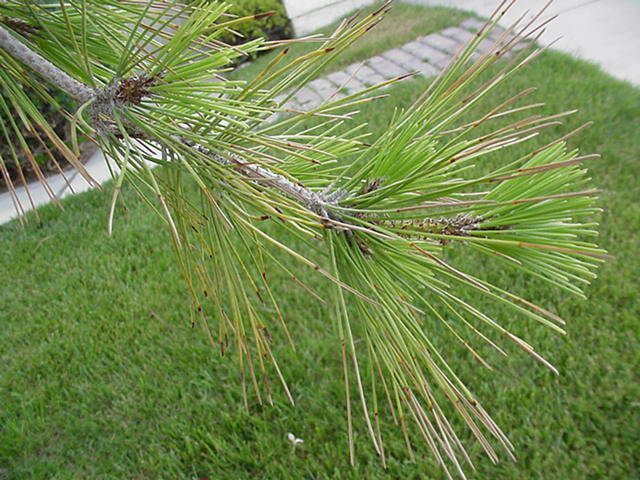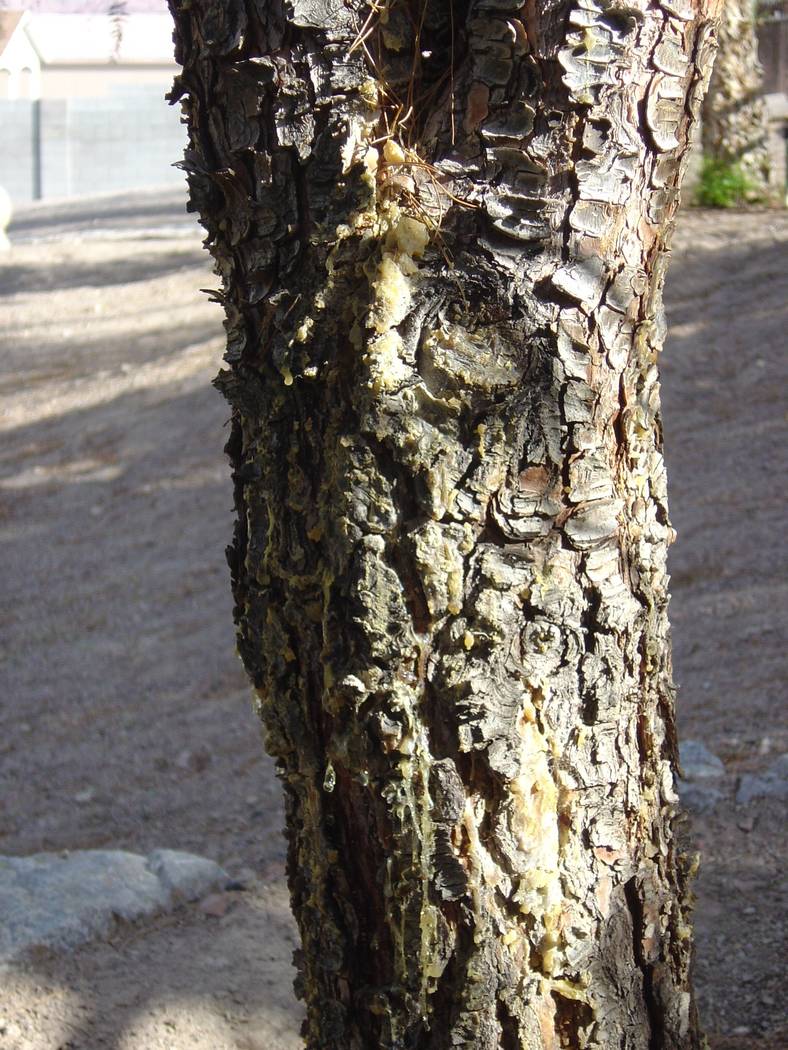Weed killer spray may have damaged pomegranate tree
Q: I have one pomegranate tree in bad shape. The leaves are turning yellow and then brown; yet underneath the veins are pink. This is one tree out of my 50 that looks like this. The other trees look great with a lot of new growth. Any ideas what could be happening with this one tree?
A: Yellowing of the leaves could be caused by several things including flooding the soil too often, poor drainage and planting too deeply. But if these trees have been growing for several years with no problems, you have done nothing differently and suddenly the leaves turn yellow, it could be damage from weed killers sprayed in the area.
Apply weed killers only when there is no wind and temperatures are cool. Best times are usually spring and fall. Some weed killers can vaporize into the air when sprayed during the heat. Slight wind or air movement causes these vapors to drift onto the leaves of valuable plants nearby and damage them.
Never spray weed killers when the wind is strong enough to move plant leaves. Use leaf movement in trees as an indicator whether to spray. Early morning hours are usually best.
Some of the worst offenders are the lawn-type weed killers used to control dandelions and similar weeds. Many lawn -type weed killers move easily with air movements and cause leaf distortion, leaf yellowing, leaf death and plant death.
If the plant is actively growing when weed killers drift onto the leaves, then wash the leaves with water as soon as possible. Diluting weed killers with water while the leaves are still wet helps prevent damage.
The weed killers are inside the plants at this point. All you can do is wait and see what happens. Fertilize it normally and water it. But remove the grass at least 2 to 3 feet from the trees and fertilize them with nitrogen.
Q: I have three 22-year-old Mondell pines that were planted when the house is built. The trees have a lot of brown needles and holes from borers or woodpeckers. I have been told both possibilities. One landscaper wants to spray chemicals for the borers, and another thinks the trees need only more water. They receive water twice a day for 40 minutes. I have considered removing them because they look so bad. I need help deciding what to do.
A: The usual reason for large pine trees growing poorly in our desert is a lack of water. They require quite a bit of water to look good. The larger they get, the more water required to look good. Plants can survive with smaller amounts of water, but to look good, they need quite a bit more.
Holes in trees do not necessarily mean it has borers. The sapsucker, a type of woodpecker, is common to the area and causes damage to trees that will make you think of borers. Any type of hole in pine trees causes sap to flow. Bird damage like this can usually be ignored unless it is severe.
Unfortunately, watering twice a day for 40 minutes says nothing about the amount of water the trees are getting. Instead, look at the new growth and the tips of the needles. If the tree is getting enough water, it should produce new growth that is 8 to 12 inches long. If there is brown on the tips of needles, they should be only on the very tips.
Your trees are still “teenagers” in tree-years. They will require more water as they grow bigger. At its current age, I am guessing it needs about 50 to 70 gallons each time it’s watered.
Watering daily is not a good idea. Large trees require single applications of water spaced far apart. The water should drain at least 24 inches into the soil when the irrigation is complete.
This type of watering encourages roots to grow deeply and helps prevent them from falling over during strong winds. Watering deeply every two to three days during the summer months should be enough.
If trees are weakened because they don’t receive enough water, they are more susceptible to insect and disease problems because they can’t recover as quickly.
How to solve this problem? Focus on proper irrigations. Deliver more water to the tree, slowly, in a single application. Schedule irrigations less often. Force the tree to use the water stored in the soil from deep irrigations. This encourages the roots to grow more deeply. Ignore the bird damage.
Q: I have fruit trees, and I want to fertilize them. But I flood the area with water during an irrigation because we use ditch water from an irrigation canal. How do you apply fertilizer to these trees without washing it away?
A: You must live in one of our rural communities where there is agriculture. Use a shovel after your irrigation turn and the soil is still wet. Push the shovel into the wet ground as deep as you can.
Push the shovel forward and drop the fertilizer off the back of the shovel. Push the hole shut with your foot. Repeat this every 3 to 4 feet apart under the canopy of the tree. Use two handfuls of your favorite fertilizer in each hole.
When fruit trees are only a couple of years old, use a lawn fertilizer high in nitrogen. When the trees start producing fruit, shift to a fruit tree, rose or tomato fertilizer that has higher amounts of phosphorus.
Fertilize once just before the leaves come out in the spring. If you want to push more new growth, fertilize a second time after harvesting the fruit. If you don’t want the tree to grow as much, fertilize only once in the spring.
Placing the fertilizer deep in the soil keeps it closer to the roots and prevents it from being washed away with a flood of irrigation water. If trees are growing in a lawn, deep placement of the fertilizer helps prevent burning of the grass in these spots.
Q: I have worked on making each area around my trees bigger, without grass or weeds, but what is the best way to remove the grass from around them? Right now, I pull out the grass when it’s wet, and it seems to work the best.
A: Keeping weeds and grass away from trees, or at least killing them, helps woody plants grow more quickly and prevents damage from machineries such as mowers and brush or line trimmers. Weeds and grasses can be removed, or they can be killed by smothering or using weed killers.
Grasses are better at removing fertilizer from the soil than woody plants such as trees, fruit trees or shrubs. They are better competitors for fertilizer. That is why annual grasses such as annual ryegrass are commonly used to harvest nitrogen from the soil as “catch crops” or “green manure” crops. Annual ryegrass, a green manure crop, is also considered a “weed” when growing near fruit trees.
Pulling weeds and grasses after a good soaking is not a bad idea but sounds like a lot of work. Grasses and many weeds require sunlight and don’t grow well in the shade. Placing old carpet, cardboard, layers of newspaper can smother the grass underneath trees, killing it, and keep machinery from damaging the trunk.
Bermudagrass is more difficult to remove but disappears in light to medium shade. Bermudagrass, which some old-timers call “devil grass,” growing in full sun spreads on top of the ground with aggressive stolon growth and below ground with aggressive growth of rhizomes. But in shade, Bermudagrass becomes weak and easy to control. As trees become larger and produce more shade, Bermudagrass disappears.
Bob Morris is a horticulture expert and professor emeritus of the University of Nevada, Las Vegas. Visit his blog at xtremehorticulture.blogspot.com. Send questions to Extremehort@aol.com.



















